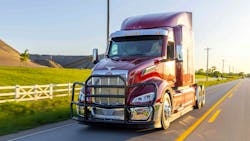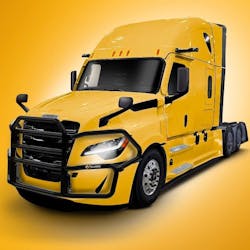Grille guards' value extends far beyond deer defense
When it comes to fleet equipment, every investment decision is scrutinized through the lenses of safety, efficiency, and return on investment. Grille guards for Classes 5-8 trucks are no exception.
These heavy-duty front-end protectors are often debated in fleet circles, and while commonly labeled as “deer guards,” “moose bumpers,” or “cattle guards,” that narrow view doesn’t capture their full value.
It’s true that grille guards are highly effective at preventing damage from animal strikes, but their utility extends well beyond these events. Urban streets and highways present a constant stream of potential threats—from sudden slowdowns and bumper-to-bumper impacts to poor visibility and slick surfaces.
While the potential for major collisions grabs attention, it’s the smaller, ‘everyday’ incidents that add up quickly and often go overlooked.
A scrape at a dock, a low-speed collision in a yard, or debris kicked up on the highway can lead to costly front-end damage. These incidents might not make headlines, but they do rack up costs—both in terms of repair bills and downtime. A broken headlight, damaged bumper, or bent radiator from a seemingly minor incident can be more than just an inconvenience; they often render a truck non-DOT-compliant and may result in a costly tow.
A surprising number of fleets don’t have great systems in place to document vehicle damage and costs associated with these events. Replacement parts continue to get more expensive, and as more fleets continue to spec trucks with the latest ADAS systems, the cost to replace collision-mitigation system radars housed in the truck’s bumper isn’t cheap.
Grille guards serve as a first line of defense, absorbing and deflecting impact from a wide range of front-end incidents. In fact, many fleets that have installed grille guards report a significant reduction of up to 80% in towable incidents following installation.
Think of grille guards like an insurance policy. They aren’t just protection for what has happened but a safeguard against what could happen. Every trip involves some level of risk. The true cost of an incident includes more than just repairs—it includes downtime, driver delays, and disruptions to service.
When a truck experiences front-end damage without any protection device, on average, a fleet can expect to pay anywhere from $10,000 to $15,000 or more, depending on the severity of the incident. And that doesn’t factor in opportunity costs—downtime of a truck that requires servicing or a replacement part can often exceed $1,300 per day, according to fleet customer surveys. Grille guards pay for themselves many times over by preventing or minimizing the damage from these common, day-to-day occurrences. Not only that, but grille guards are also designed to outlast the lifecycle of a truck, so that they can be fitted on the replacement truck (assuming the same make and model) or sold with the truck, which can increase its resale value.
Fleets that track incident data frequently find that the return on investment from a grille guard is achieved after avoiding just one or two front-end repairs. Factor in fewer insurance claims, reduced downtime, and better truck availability, and the business use case becomes even stronger.
While not every truck will face a major impact, the everyday protection and peace of mind provided across an entire fleet make grille guards a smart and strategic investment.
About the Author

Nathan Holt
Product marketing manager
Nathan Holt is the product marketing manager for Ex-Guard, the leading manufacturer of premier grille guards for commercial heavy, medium, and light-duty trucks, vans, and RV’s in North America. Holt is a seasoned marketing professional with a passion for the automotive industry and has years of experience crafting content that educates and informs. He brings a practical, customer-focused perspective to topics like vehicle protection and fleet asset optimization, helping readers separate fact from fiction.

